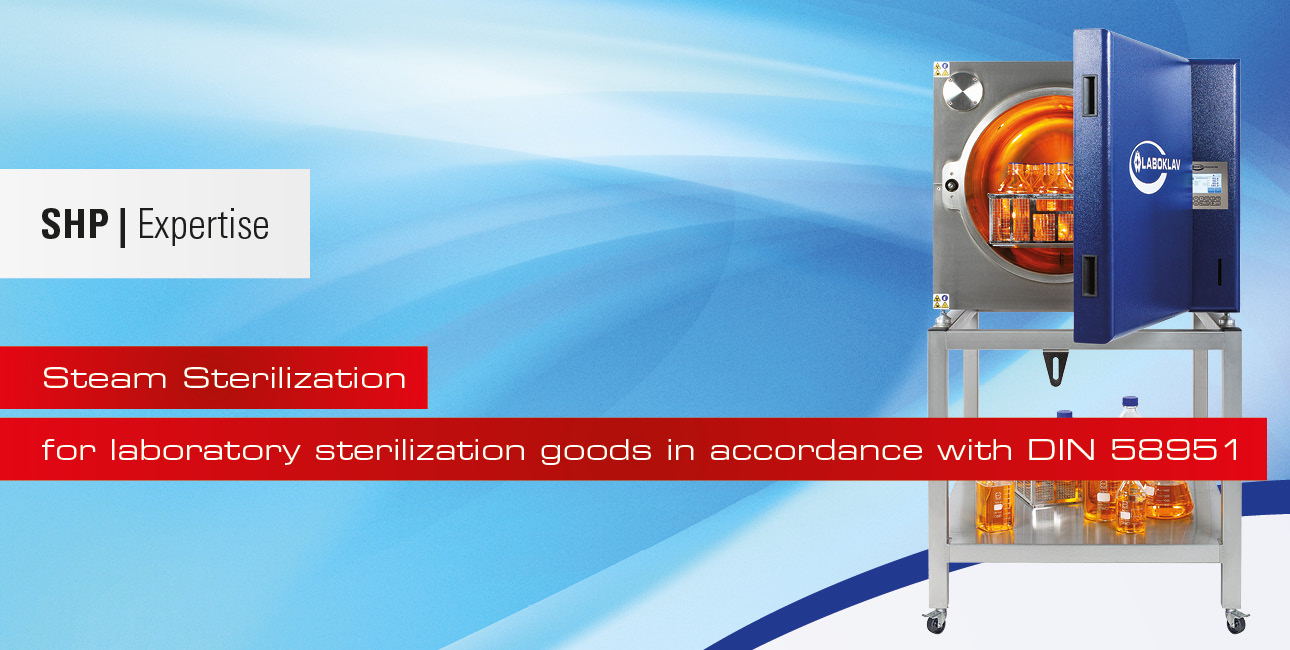The standard governs the use of steam sterilizers for laboratory applications in research and medicine.
General Information
The DIN 58951-2:2003-07 standard defines requirements for steam sterilizers used in medical and biological laboratories. This includes the sterilization of liquids, porous goods, equipment, and the thermal disinfection of waste.
Not applicable for:
- Steam sterilizers for medical or pharmaceutical goods (DIN EN 285, E DIN EN 13060, DIN 58950)
- Steam disinfection devices used in medical settings (DIN 58949)
- Waste subject to specific infection prevention requirements (DIN 58949)
Contents of the Standard
- Structural, equipment, and operating material requirements
- Device groups, sterilization methods, and equipment
- Combinations of process steps: heating, evacuation, cooling, drying
- Dimensions, designations, and materials
- Safety requirements
Design and Technology
- Steam pressure vessels
- Doors, locks, test ports
- Pipes and fittings
- Vacuum systems, wastewater cooling systems
- Filters (inlet air, ventilation, exhaust air)
- Connection to drinking water supply
- Measuring instruments: temperature, time, fill level
- Temperature and pressure recording (including reference container for liquids)
- Control systems with error detection
Device Groups according to DIN 58951-2
| Group | Requirements | Sterilization goods and application area |
|---|---|---|
| A | basic | Solid items, laboratory equipment, small quantities of liquids in open containers |
| B | basic | Solid, porous, and liquid goods |
| C | advanced | Solid, porous, and liquid goods |
| D1 | advanced | Specific pathogen-free (SPF) areas, sterile animal breeding |
| D2 | advanced | SPF animal quarantine areas |
| E1 | advanced | Laboratory and clinical waste (without liquids) for disposal |
| E2 | advanced | Microbiologically contaminated liquids in larger quantities for disposal |
Operating Resources & Structural Requirements
- Electrical supply
- Sterilization steam from external steam source
- Feed water, drinking water
- Compressed air supply
- Startup and operating conditions
- Installation space, floor area, and technical connections
 DE
DE  EN
EN  PL
PL  FR
FR  ES
ES  SV
SV  NL
NL 

